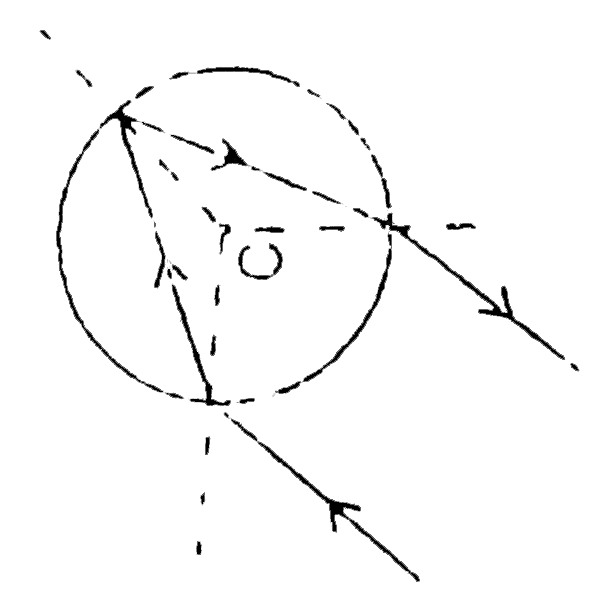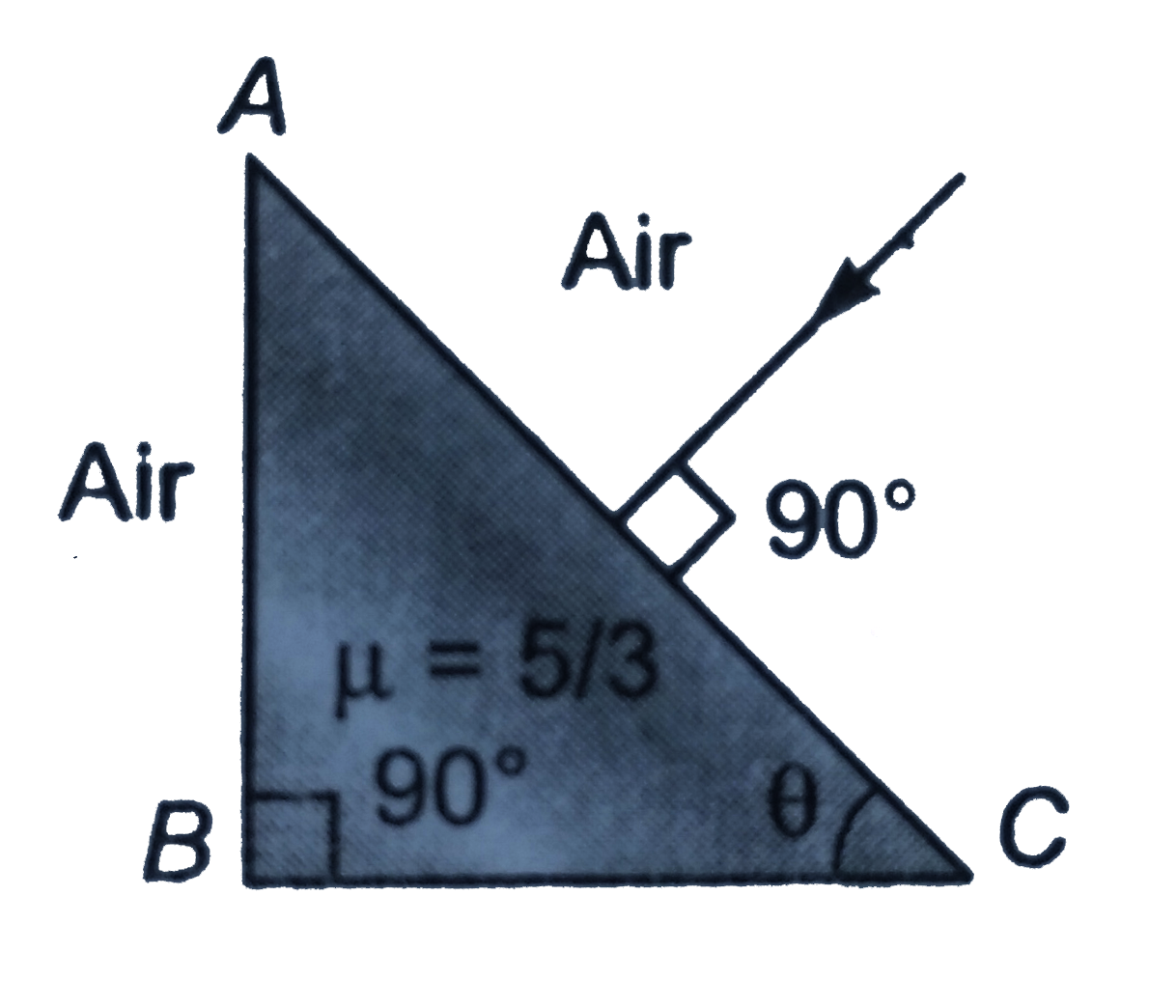Based on the condition of no emergence from face AC
In the shown figure,
A=110∘,B=20∘,C=50∘,i1=45∘ and μ=√2
Find the total deviation by prism.

The correct Answer is:B
θC=sin−1(1μ)=sin−1(1√2)=45∘
Here, A>2θC
Therefore, TIR will take place at AC and the ray of light
emerges from the prism as shown in figure.
Applying, μ=sinisinr at M and Q, we can find the respective
angles as shown in figure.
Now, deviation at M is clockwise, deviation at N is clockwise but deviation at Q is
anti-clockwise.
∴δTotal=δM+δN−δQ
=(45∘−30∘)+(180∘−2×80∘)−(45∘−30∘)
=20∘

Topper's Solved these Questions
- REFRACTION OF LIGHTBOOK - DC PANDEY ENGLISHCHAPTER - REFRACTION OF LIGHTEXERCISE - Example Type 10
1 Videos
- REFRACTION OF LIGHTBOOK - DC PANDEY ENGLISHCHAPTER - REFRACTION OF LIGHTEXERCISE - Example Type 11
3 Videos
- REFLECTION OF LIGHTBOOK - DC PANDEY ENGLISHCHAPTER - REFLECTION OF LIGHTEXERCISE - Subjective
9 Videos
- SEMICONDUCTORSBOOK - DC PANDEY ENGLISHCHAPTER - SEMICONDUCTORSEXERCISE - Subjective
12 Videos
Similar Questions
In the figure shown, find .1μ2.

View SolutionGeneral method of finding deviation by prism.

In the ray diagram shown in figure, find total deviation by prism.
View SolutionA right-angled prism of apex angle 4∘ and refractive index 1.5 is located in front of a vertical plane mirror as shown in figure. A horizontal ray of light is falling on the prism. Find the total deviation produced in the light ray as it emerges 2nd time from the prism.

View SolutionA ray of light is incident on the surface of a transparent sphere of R.I.μ=√72. After refraction is is internally reflected and refracted out of the sphere as shown in the figure. Find the angle of incidence 'I' so that the total deviation produced is minimum. 'C' is the centre of the sphere.
 .
.
View Solution(i) Find out the charges on the three capacitors connected to a battery as shown in figure. Take C1=1.0μF,C2=2.0μF,C3=3.0μF and V=20 volt

(ii) Find out the work done by the battery during the process of charging (initially all the capacitors are uncharged)
(iii) Find out the total energy stored in the capacitors.
View Solution
Refractive index of a glass cube is √2. A ray of light is incident on left face of the cube as shown. Right face of a glass cube is silvered. If the total deviation suffered by the ray when it comes out of the glass cube is 45n (in degree) then find n:
View SolutionA ray of light mekes normal incidence on the diagonal face of a right angled prism as shown in figure. If θ=37∘, then the angle of deviation after second step (from AB) is (sin37∘=3/5)

View SolutionA light ray is incident on face AB of a prism ABC as shown in figure. The second prims is ketp in such a manner the emergent ray from prism ABC is falling normally on face A'B' of prism A'B'C'. The net deviation by optical system two prisms is (8k) degree. find the value of k.

View Solution
The figure shows a constant deviation prism ABCD. The incident ray is PQ and the emergent ray is ST. Although it is made up of one piece of glass, but it is equivalent to two 30∘−60∘−90∘ prism and one 45∘−45∘90∘ prism.The angle θ1 is the angle of incidence on face AB. The path of the ray inside the prism is indicated in the figure. for this prism μ=2sinθ1.
Q. The total deviation of incident ray when it emerges out of the prism is
View SolutionA prism (μP=√3) has an angle of prism A=30∘.A thin film (μf=2.2) is coated on face AC as shown in the figure.Light of wavelength 550nm is incident on the face ABat60∘angle of incidence,find
(I)the angle of its emergence from the faceACand

(ii)the minimum thickness (in mn) of the film for which the emerging light is of maximum possible intensity.
View Solution
